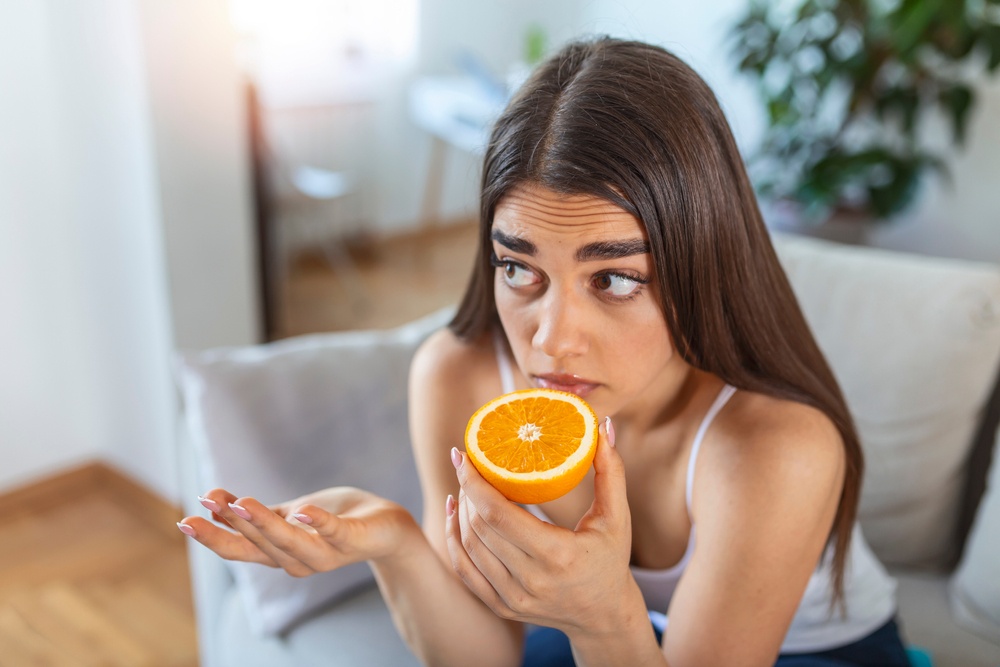How to Improve Your Sense of Smell and Taste
Posted on Categories Discover Magazine

Our sense of smell and taste has played a vital role in human evolution. To this day, we rely on these two senses to help us identify proper foods to eat and recognize potential dangers like fires or gas leaks.
A deficit in these senses can negatively impact our lives. And while preventing the impairment or loss of these senses is not always possible, we can often use methods to improve them. The most common related disorders are:
-
Ageusia: The loss of sense of taste.
-
Anosmia: The loss of sense of smell.
-
Hyposmia: Diminished ability to smell.
-
Hypogeusia: Diminished ability to taste sweet, sour, salty, or bitter substances.
Smell and Taste Are Intertwined
While taste and smell are two different senses, they are inextricably connected. In fact, smell is responsible for 80 percent of what we taste. Olfactory nerves — located in the nose — and taste buds on our tongues are both used to send messages to the brain. It is there that the information is received, allowing flavors to be identified.
Pastry chef Rory Macdonald explains integrating aspects of taste and smell into cooking can either enhance or negatively impact the culinary and flavor experience. According to Macdonald, our interpretation of smell is so impactful on taste that if you were eating a grilled cheese sandwich at the same time you detected burnt cheese, your sandwich would taste burnt even if it was not.
Read More: How Our Sense of Taste Evolves and Adapts
Impact of Age on Smell and Taste
These senses commonly become impaired as people age, with almost 40 percent of Americans ages 80 and above experiencing smell impairment and 27 percent reporting taste impairment. As we age, our olfactory nerves degenerate, which leads to a diminished sense of smell in elderly people.
Taste buds are also altered by loss of nerve function, resulting in a less distinct sense of taste. People can identify four tastes — salty, sweet, sour and bitter. Since salt is one of the first tastes that becomes decreased, older people may oversalt their food to compensate for the loss, leading to high blood pressure levels. Other causes among older populations are tooth loss/denture wearing and reduced saliva production.
Read More: Why Does Our Sense of Taste Change As We Get Older?
Impact of Certain Health Conditions
We all know how hard it is to smell or taste normally when we are sick. Allergies, colds, the flu, sinus congestion and nasal polyps are the most common health issues which reduce these senses. They cause inflammation and swelling, reducing our ability for normal smell/taste function.
Several neurodegenerative conditions can be associated with loss of smell and taste, including Alzheimer’s, Parkinson’s and multiple sclerosis. Just as areas of the brain related to taste/smell can be affected by neurological illness, brain injury can be another determining factor. This is due to damage in the nerves that are needed to process the signals sent to the brain.
Read More: Your Sense of Smell Is Linked to Your Overall Health
How to Improve Loss of Smell and Taste
When there is a decline in the quality of these particular senses, it is not always possible to regain them to previously functioning levels. However, there are situations where there are potential ways to improve your diminished senses.
-
Keep a journal: Be mindful of the smells you can identify. Concentrate on them and then immediately write in your journal — describing as many details as possible. This will help trigger your brain to recognize them in the future. Keep a similar journal for taste. When you’re eating, try to detect the different flavors and spices.
-
Use powerful spices/seasonings/herbs: These include garlic, cumin, ginger, cayenne pepper, chili powder and cinnamon. The more intense and flavorful they are, the more likely you are to identify them.
-
Serve hot and cold foods together: The contrast can spur your taste buds.
-
If you smoke, quit: Pollutants are irritating to smell receptors, and smoking causes pollutants to be inhaled directly into your airways. Research shows that smokers who quit report an improvement in their ability to taste and smell.
Read More: Our Sense of Smell May Be More Powerful Than We Think